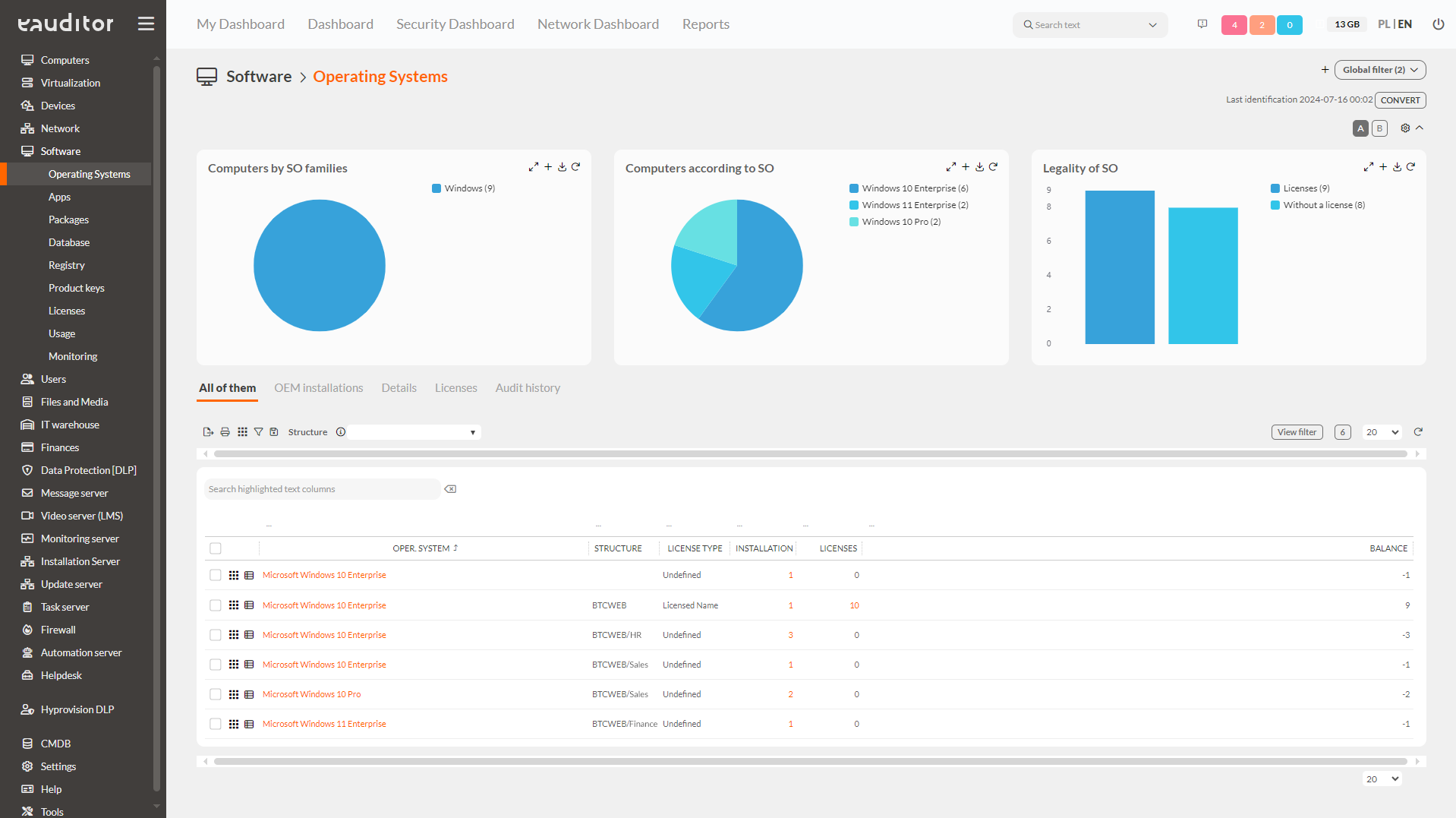Inventory of operating systems
- Inventory of Windows, Linux, MacOS
- Assigning system licenses to the structure
- Audit of owned operating systems
Table of contents
Inventory of operating systems
As part of the inventory process, it is also possible to review all available operating systems used within the organization. Similarly to computers, it is possible to assign a specific license for an operating system to a particular organizational structure.
Inventory details
During operating system inventory, administrators receive detailed information regarding:
-
Operating system name
Identifying the specific operating system installed on a device is a fundamental element of inventory management. The eAuditor system enables precise recognition of this information. These details are crucial for managing software compatibility and planning future updates.
-
License type
The type of license assigned to each operating system is meticulously recorded. Accurate information about license types allows for better resource management and ensures compliance with licensing policies.
-
Number of available licenses
The system enables monitoring of the number of purchased and available licenses based on the provided data. Administrators can track purchases, monitor usage, and optimize costs by identifying surplus licenses. This ensures better resource management and helps the organization avoid unnecessary expenses.
-
Number of installations
Tracking the number of operating system installations across devices within the organization is key to managing IT infrastructure. The eAuditor system allows precise recording of how many instances are actively in use, ensuring licensing compliance and facilitating the planning of updates and technology migrations. This enables efficient license management and helps prevent issues related to licensing audits.


